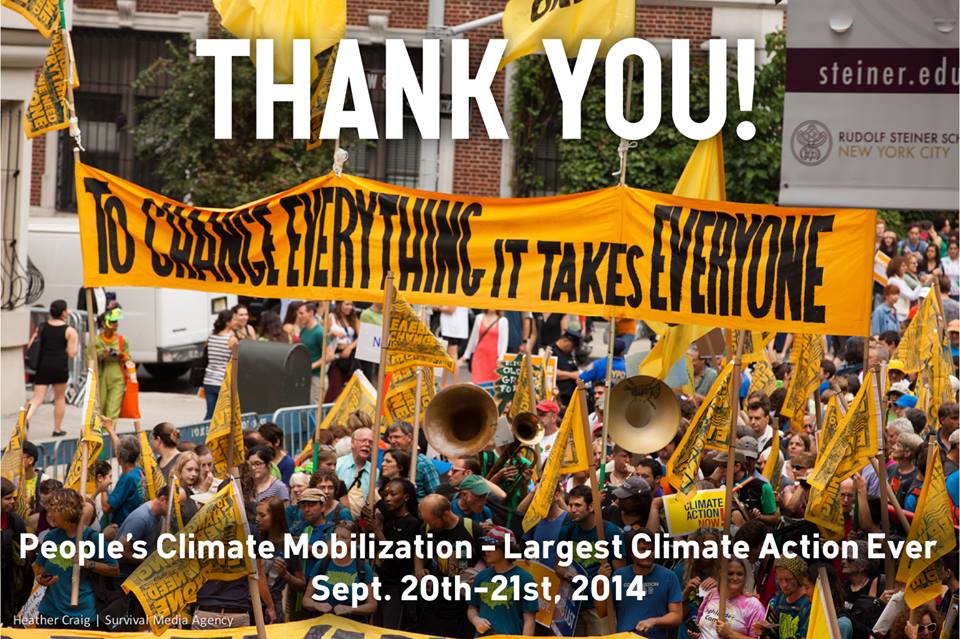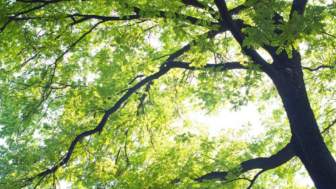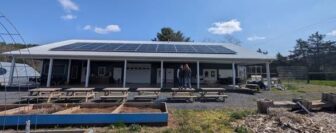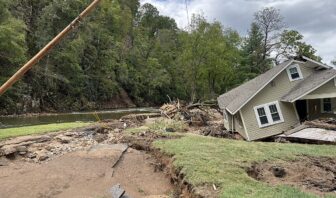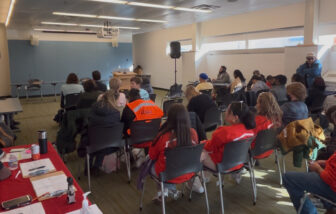Yesterday, we started changing everything because of everyone who showed up in the streets of New York City. The People’s Climate March was huge — with the final crowd count of 400,000 people toppling the record books and making this the biggest climate demonstration in history.
The mass numbers were apparent if, like CCAN staff and supporters, you had lined up toward the back of the 20-block-long assembly area. Standing with the Anti-Fracking Allies, who came from all over New York and Pennsylvania, North Carolina, Maryland, and beyond, and just in front of the “Debate is Over” scientists’ contingent replete with a “chalkboard” lesson on climate science, we waited until well after 2:00 p.m. to start marching. In front of us and behind us was a sea of people, and a beautiful sea it was.
But it wasn’t just the numbers that were inspiring and change-making, it was who showed up to create them. They really did include just about everyone.
Indigenous communities and communities of color — who, as the banner they held stated, are on the “Frontlines of Crisis, Forefront of Change” — led the march.

New Yorkers flooded out during Hurricane Sandy and other folks displaced from their homes and homelands by rising tides carried symbolic life preservers and tents.

A raucous, dancing and chanting youth contingent of 50,000 filled ten city blocks and united students from 400 campuses.

Immigrants marched. Teamsters marched. Healthcare workers marched. So so many children marched — as well as grandparents. Muslim marchers stood shoulder to shoulder with Christians and Jews and Buddhists. LGBTQ folks like myself were part of every contingent.
In just the immediate few blocks where CCANers set off, we were surrounded by people resisting tar sands pipelines in the Midwest, oil drilling in the Arctic, fracking wells in the Catskills, and the Cove Point liquefied natural gas export terminal along the Chesapeake Bay in Southern Maryland.


To me, the most inspiring part of seeing so many people come together is knowing that so many people understand that we are all connected in this fight. And that is power.
Our record numbers made a bold and decisive statement about the urgency for action. And the diversity therein made a bold and decisive statement about the kind of movement we must build to win it. The solution is clear — switching from fossil fuels to clean energy. So is the biggest obstacle — an economic and political system most often run by and for big corporations, corporations that make money and maintain power by perpetuating injustice, dividing our communities and, ultimately, wrecking the planet.
Creating the change we need on climate will require transforming those systems to serve people and to protect the planet. That transformation won’t be easy, or quick, and it will take a lot more organizing on scales both bigger and smaller than the march on Sunday. But if everyone who marched on Sunday, and everyone who was there in spirit, keeps taking action — and keeps building connections between our movements — we might just have the power to build a better future for everyone.
